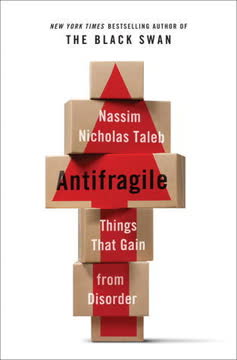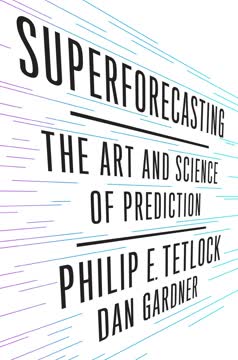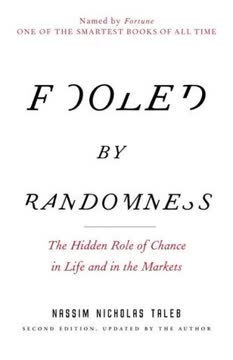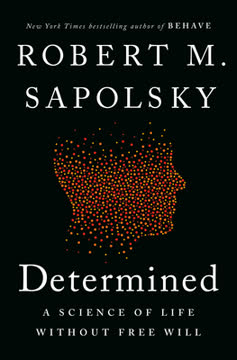重点摘要
1. 噪音:人类判断中的隐藏变异
只要有判断,就会有噪音,而且比你想象的更多。
噪音的定义。 噪音是本应相同的判断中不必要的变异。当不同的专业人士在相同信息下得出不同结论时,就会产生噪音。这种变异通常是看不见的且被低估,但在各个领域都有显著影响,包括:
- 医学:医生对同一患者做出不同诊断
- 刑事司法:法官对类似犯罪判处截然不同的刑罚
- 商业:承保人对相同风险设定不同的保费
噪音的影响。 噪音的存在导致决策过程中的不公平、不一致和昂贵的错误。与导致系统性错误的偏见不同,噪音在判断中产生随机散布。这种随机性可能和偏见一样有害,甚至更甚,因为:
- 它削弱了专业判断的可信度
- 它导致类似案件的不同待遇
- 它可能在商业环境中导致重大财务损失
2. 偏见和噪音:错误的两个不同组成部分
偏见和噪音——系统性偏差和随机散布——是错误的不同组成部分。
理解错误。 判断中的错误由两个组成部分构成:偏见和噪音。虽然两者都导致不准确,但方式不同:
- 偏见:平均误差或系统性偏离目标
- 噪音:判断围绕平均值的变异或散布
错误方程。 偏见和噪音在确定总体错误中的关系可以用数学表达:
总错误 = 偏见² + 噪音²
这个方程强调:
- 减少偏见或噪音都能提高准确性
- 在许多情况下,噪音对错误的贡献大于偏见
- 减少错误的努力应同时解决这两个组成部分
3. 噪音在各个领域的普遍性
系统噪音是一个严重问题:它让我们损失数亿美元。
广泛存在。 噪音不仅限于某些特定领域,而是普遍存在于各个领域和职业中。例子包括:
- 医学:诊断、治疗建议和预后中的变异
- 法律:判刑、保释决定和庇护批准中的不一致
- 商业:招聘决策、绩效评估和财务预测中的差异
- 政府:政策实施和监管决策中的差异
隐藏成本。 噪音的财务和社会成本常被低估或完全忽视。这些成本表现为:
- 资源分配中的低效
- 对个人的不公平待遇
- 公共对机构信任度的降低
- 错失机会和次优决策
4. 组织中的噪音测量和审计
要理解判断中的错误,我们必须理解偏见和噪音。
噪音审计。 噪音审计是测量组织或决策系统中噪音水平的系统方法。过程通常包括:
- 向多个评判者提供相同的案例或情景
- 收集他们的独立判断
- 分析这些判断中的变异
噪音类型。 噪音审计可以揭示不同类型的噪音:
- 水平噪音:个体之间判断水平的一致差异
- 模式噪音:个体对不同案例特征的反应差异
- 场合噪音:个体对同一案例在不同时间的判断变异
审计的好处。 进行噪音审计可以:
- 提高对组织中噪音程度的认识
- 识别高噪音水平的特定领域或过程
- 提供衡量噪音减少效果的基准
5. 噪音背后的心理学:为什么它会发生和持续
判断就像投篮:无论我们多么努力地重复它,它都不会完全相同。
认知因素。 多种心理机制导致噪音的产生和持续:
- 过度一致性:形成过于一致印象的倾向
- 确认偏见:寻找支持初始印象的信息
- 可得性偏见:过度重视容易回忆的信息
- 锚定效应:受无关初始信息的影响
一致性幻觉。 人们常常高估他人会同意自己判断的程度。这种幻觉源于:
- 难以想象替代观点
- 寻求确认自己观点的倾向
- 缺乏对判断准确性的定期反馈
客观无知。 许多情况的固有不可预测性导致噪音。人们常常低估自己的不确定性水平,导致:
- 对预测的过度自信
- 未能考虑未知因素
- 难以区分判断中的技能和运气
6. 决策卫生:减少噪音和改进判断的策略
决策卫生将防止错误,而无需知道它们是什么。
决策卫生原则。 为减少噪音和提高判断质量,组织可以实施多种策略:
- 在判断中优先考虑准确性而非个人表达
- 采用外部视角并进行统计思考
- 将复杂判断结构化为独立任务
- 抵制过早的直觉
- 在小组讨论前获取独立判断
- 尽可能使用相对判断而非绝对判断
具体技术。 各种方法可以用于实施决策卫生:
- 指南和检查表:提供结构化的决策方法
- 中介评估协议:将复杂决策分解为独立评估
- 多个独立判断的聚合:利用群体智慧
- 校准使用算法:用数据驱动的见解补充人类判断
克服阻力。 实施决策卫生常面临阻力,原因包括:
- 对直觉判断优越性的信念
- 对感知自主权丧失的不适
- 低估噪音的普遍性和影响
7. 平衡规则和标准:寻求最佳噪音减少
规则简化生活,减少噪音。但标准允许人们根据情况进行调整。
规则与标准。 在噪音减少中选择规则和标准代表了一个基本的权衡:
- 规则:精确、僵化的指南,最小化自由裁量权
- 标准:允许逐案解释的一般原则
考虑因素。 在决定使用规则还是标准时,组织应权衡:
- 决策成本:规则通常需要较少的应用努力
- 错误成本:标准可能更好地适应独特情况
- 一致性的需求:规则促进统一性,但可能牺牲适应性
- 领域的复杂性:标准可能更适合高度可变的环境
最佳噪音。 目标不是消除所有噪音,而是找到合适的平衡:
- 减少判断中的有害变异
- 保持灵活性以应对独特情况
- 保持人类尊严和公平待遇的感觉
- 允许价值观和实践随时间演变
最后更新日期:
FAQ
What's Noise: A Flaw in Human Judgment about?
- Focus on Judgment Errors: The book explores the concept of noise, which is unwanted variability in judgments, and its impact on decision-making across fields like law, medicine, and business.
- Bias vs. Noise: It distinguishes between bias, a systematic error, and noise, which is random variability in judgments that should be identical.
- Real-World Examples: The authors provide numerous examples to illustrate how noise affects decision-making processes and emphasize the need for awareness and reduction of noise.
Why should I read Noise: A Flaw in Human Judgment?
- Improve Decision-Making: The book offers insights into how understanding noise can lead to better judgments in both personal and professional contexts.
- Evidence-Based Approach: It draws on extensive research and real-world case studies, making the content credible and applicable.
- Practical Applications: The book provides actionable advice and methods for reducing noise, making it a valuable resource for professionals across different fields.
What are the key takeaways of Noise: A Flaw in Human Judgment?
- Distinction Between Bias and Noise: Understanding the difference between systematic bias and random noise is crucial for improving judgment accuracy.
- Noise Audits: The authors introduce noise audits as a method for measuring variability in judgments within organizations.
- Importance of Algorithms: Simple algorithms often outperform human judgment due to their lack of noise, challenging the belief in human intuition's superiority.
How does Noise: A Flaw in Human Judgment differentiate between bias and noise?
- Bias Defined: Bias refers to systematic errors in judgment that consistently push decisions in one direction.
- Noise Explained: Noise is the random variability in judgments that should be the same, leading to inconsistent outcomes.
- Impact on Decision-Making: Addressing noise requires different strategies than addressing bias, making this distinction crucial for improving decision processes.
What is a noise audit, and how is it conducted in Noise: A Flaw in Human Judgment?
- Definition of Noise Audit: A noise audit is a systematic evaluation of the variability in judgments made by professionals within an organization.
- Methodology: It involves presenting the same cases to multiple judges and analyzing the differences in their judgments.
- Outcomes: The results can reveal significant discrepancies, prompting organizations to address noise and implement improvement strategies.
What is decision hygiene as described in Noise: A Flaw in Human Judgment?
- Preventive Approach: Decision hygiene refers to practices that aim to reduce noise in decision-making processes.
- Structured Processes: It involves structuring judgments into smaller, independent tasks and delaying holistic judgments until all components have been evaluated.
- Focus on Accuracy: The goal is to enhance the accuracy of judgments by minimizing variability caused by individual biases and cognitive errors.
How does noise affect decision-making in medicine according to Noise: A Flaw in Human Judgment?
- Variability in Diagnoses: Different doctors can arrive at varying diagnoses for the same patient, highlighting noise in medical judgments.
- Impact on Patient Care: High levels of noise can lead to misdiagnoses and inconsistent treatment recommendations.
- Case Studies: Examples from medical practice illustrate how noise manifests in areas like radiology and psychiatry.
How do algorithms compare to human judgment in predictive tasks in Noise: A Flaw in Human Judgment?
- Superiority of Algorithms: Algorithms, particularly simple models, often outperform human judgment due to their lack of noise.
- Examples of Success: The book provides examples where algorithms have successfully predicted outcomes in fields like finance and healthcare.
- Implications for Professionals: Professionals are encouraged to integrate algorithmic approaches to enhance accuracy and reduce noise.
What is the mediating assessments protocol mentioned in Noise: A Flaw in Human Judgment?
- Structured Evaluation Process: It is a structured approach to decision-making that breaks down complex judgments into independent assessments.
- Independent Assessments: Each assessment is evaluated separately to minimize biases and ensure objective criteria.
- Delayed Holistic Judgment: Final decisions are made only after all assessments, allowing for a more informed conclusion.
What strategies can be implemented to reduce noise in decision-making according to Noise: A Flaw in Human Judgment?
- Decision Hygiene: Practices like standardizing procedures, using checklists, and implementing noise audits are recommended.
- Training and Education: Training professionals on the impact of noise and bias can improve decision-making practices.
- Use of Algorithms: Integrating algorithms into decision-making processes can help reduce noise and enhance accuracy.
What are the different types of noise discussed in Noise: A Flaw in Human Judgment?
- Level Noise: Variability in the average severity of judgments made by different individuals.
- Pattern Noise: Differences in how individuals respond to specific cases, reflecting unique biases and perspectives.
- Occasion Noise: Variability in judgments made by the same individual at different times, influenced by mood and circumstances.
What are the best quotes from Noise: A Flaw in Human Judgment and what do they mean?
- “Wherever there is judgment, there is noise—and more of it than you think.”: Emphasizes that noise is a pervasive issue in decision-making.
- “The rule of law calls for a body of impersonal rules, applicable across the board.”: Advocates for standardized decision-making processes to reduce noise.
- “You are not the same person at all times.”: Highlights occasion noise, reminding readers of the variability in individual judgments.
评论
《噪音》收到了褒贬不一的评价,有人称赞其对决策变异性的洞察力,也有人批评其篇幅过长和内容重复。许多人认为判断中的噪音概念很有价值,但也有人认为这本书相比卡尼曼之前的作品缺乏新意。读者们欣赏其在医学和法律等领域的实际应用,但有些人觉得写作风格枯燥且过于学术化。书中对统计思维和决策卫生的强调得到了注意,尽管对其整体影响力和可读性的看法不一。
Similar Books

















